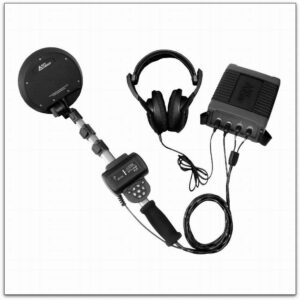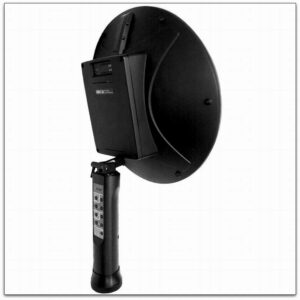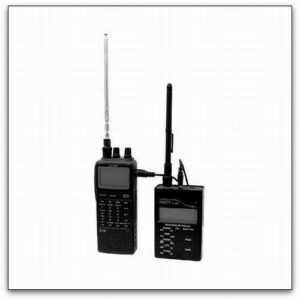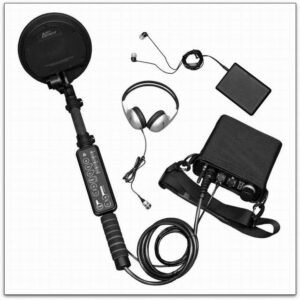Description
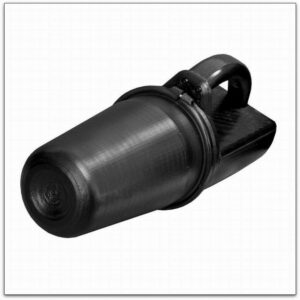
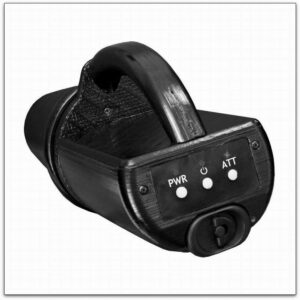
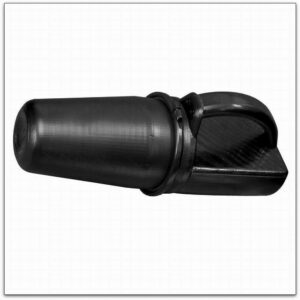
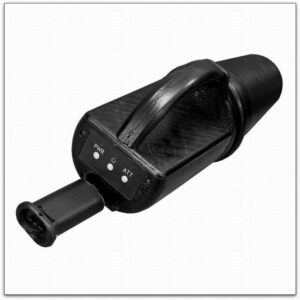
This new non linear junction detector is designed to detect:
Prohibited electronic devices (including voice recorders, mobile telephones, SIM-cards, digital memory devices), as well as firearms. Improvised explosive devices (IED electronic control systems) in hand luggage and on the operator’s body, in the complex technogenic interference from the city environment. Covert eavesdropping electronic devices.
Features:
Absolute safety (sanitary-hygienic certificate).
Accurate detection of ultra miniature electronic devices, which are problematicly detected by metal detectors.
Confident detection of small-sized targets in a wide range of embedding environments (including wet environments).
Precise identifications at fast rate of sweep.
Single body construction, no detachable connections or cables.
The device allows to detect:
SIM (UIM) card: up to 0,5m
Mobile phone: up to 1m
Technical characteristics:
Type of modulation: pulse-amplitude modulation
Mode of operation: Search
Average output power in search mode: not more than 200mW
Power supply: 2 Soshine batteries 18650 3,7V
Operation time: at least 4h
Operational weight: not more than 1.2kg
Non Linear Junction Detectors:
In 1970s Americans detected wires in the concrete columns of the American Embassy in Moscow. The bugs were installed during the construction of the building, and there was no other way to extract them except for complete destruction of the building. One shouldn’t neglect the importance of correct frequency tuning of NLJD equipment for different types of search environment (for instance, concrete walls). Bugs or wires (as covert listening devices are commonly called) can be set up deep in concrete columns and they still will be transmitting signals. Non-linear junction detectors (NLJD) are devices designed for search and detection of different types of covert listening devices, various electronic appliances and transmitters comprising of semiconductors. The principle of NLJD equipment operation is based on emission of high radio frequency energy in an area. Detectors have a sensitive receiver designated for reception of objects’ echo signals which, for operator’s convenience, are marked down with sound or displayed on graphical user’s interface. Depending on the model, non-linear junction detectors are capable of detecting almost any electronic appliance in any operational mode: active, stand-by, switch-off. The designation of such devices consists in detection of radio microphones, microphone amplifiers, dictophones in premises (walls, floors, ceilings, furniture, etc.). Non-linear junction detectors acquired a reputation as perfect means of counter-espionage, as embassies and other diplomatic posts are known to be most popular targets for eavesdropping equipment. Specific models of NLJD are used by the police in search for weapons during events involving great masses of people. Detectors are used for providing location secure from covert listening devices in different organizations. Non-linear junction detectors can serve multiple purposes and have a wide range of implementation, starting from ground detectors up to equipment used for detection of mobile phones. Wide range of NLJD is presupposed by the type of material or surface for search operations – ground detectors are preferable for object detection in soil, portable detectors tuned to appropriate frequency are better in search within wooden furniture. Non-linear junction detectors have a very peculiar designation, therefore their usage is conditioned by goals set by customers. Taking into account great variety of NLJD equipment there is a specific model for any purpose you may require. Current NLJD products line include models for various applications.
Why Non Linear Junction Detectors?
NLJD technology has proven to be most effective in detection of semiconductors containing multiple layers of silicon, a P-Type and an N-Type. The point where they meet is called a Non Linear Junction.Non Linear Junction also appears in nature: dissimilar metals in contact with one another; the rust on metals resulting from corrosion.


